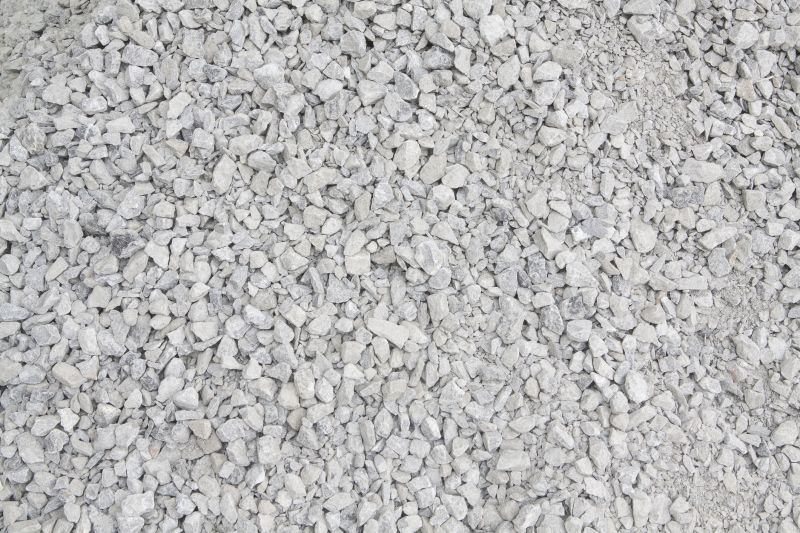Top Products for Crushed Concrete Deliveries to Boost Your Projects
Explore the leading solutions designed for efficient and reliable crushed concrete deliveries to meet construction and landscaping needs.
 Products designed for crushed concrete deliveries encompass a wide array of equipment and accessories tailored to facilitate efficient transportation, handling, and application of crushed concrete material. These products are essential for construction projects, landscaping, and driveway repairs where crushed concrete serves as a foundational or decorative element. The variety includes heavy-duty trucks equipped for bulk deliveries, specialized trailers for easier loading and unloading, and compactors or spreaders that help distribute the material evenly across surfaces. Ensuring the right products are selected can streamline project workflows and improve overall results.
Products designed for crushed concrete deliveries encompass a wide array of equipment and accessories tailored to facilitate efficient transportation, handling, and application of crushed concrete material. These products are essential for construction projects, landscaping, and driveway repairs where crushed concrete serves as a foundational or decorative element. The variety includes heavy-duty trucks equipped for bulk deliveries, specialized trailers for easier loading and unloading, and compactors or spreaders that help distribute the material evenly across surfaces. Ensuring the right products are selected can streamline project workflows and improve overall results.
Top Overall Option
Heavy-Duty Material Transport Truck
A versatile heavy-duty transport truck designed to handle large volumes of crushed concrete efficiently. Equipped with a durable bed and hydraulic lift system, it allows for easy loading and unloading, making it suitable for various project sizes. Its robust construction ensures longevity and reliable performance across multiple deliveries.
Types of Products For Crushed Concrete Deliveries
Bulk Delivery Trucks
Vehicles designed to transport large quantities of crushed concrete directly to the work site, optimizing delivery efficiency.
Trailers and Dump Bodies
Specialized trailers with dump capabilities for easy offloading of crushed concrete on-site.
Conveyor Systems
Portable conveyors that facilitate precise placement and spreading of crushed concrete.
Skid Steer Attachments
Attachments like buckets and spreaders compatible with skid steers for spreading and leveling crushed concrete.
Vibratory Rollers
Equipment used to compact crushed concrete surfaces, ensuring stability and durability.
Portable Screening Equipment
Machines that sort and size crushed concrete, useful for projects requiring specific aggregate sizes.
Hydraulic Lifts
Lifting mechanisms integrated into trucks or trailers to facilitate quick unloading of heavy materials.
Spreaders and Distributors
Tools designed to evenly distribute crushed concrete over prepared surfaces for consistent coverage.
Dumping Containers
Large containers used for transporting and unloading crushed concrete efficiently.
On-site Mixing Equipment
Portable mixers that combine crushed concrete with other materials for specific construction needs.
Popular Choices
Widely used for transporting large quantities of crushed concrete directly to sites, supporting efficient project workflows.
Commonly selected for their ease of unloading and capacity to handle substantial loads of crushed concrete.
Popular for small to medium projects, offering versatility with various attachments for spreading and leveling.
Often chosen for their effectiveness in compacting crushed concrete surfaces to ensure stability.
Favored for their ability to precisely place and spread crushed concrete across different terrains.
Popular for projects requiring specific aggregate sizes or removing debris from crushed concrete.
Selected for their efficiency in offloading large volumes of crushed concrete quickly and safely.
Commonly used to achieve even coverage of crushed concrete on prepared surfaces.
Popular for their capacity and ease of use in transporting and unloading crushed concrete materials.
Frequently utilized for small-scale projects requiring on-site blending of materials.
When choosing products for crushed concrete deliveries, considerations often include load capacity, durability, ease of handling, and compatibility with existing equipment. For instance, selecting a delivery truck with an adequate volume capacity can reduce the number of trips needed, saving time and operational costs. Additionally, accessories like adjustable spreaders or conveyor systems can enhance the precision and uniformity of material distribution. Properly designed equipment also minimizes spillage and waste, contributing to cleaner work sites and more efficient use of resources.
In the realm of handling and application, there are various tools and machinery designed to work specifically with crushed concrete. These include vibratory rollers for compaction, skid steer attachments for spreading, and portable screens for sorting or sizing. The versatility of these products allows for customization based on project scale and specific requirements. Whether working on small residential projects or large commercial developments, having access to the right range of products ensures smoother operations and more consistent results.
Overall, investing in quality products for crushed concrete deliveries can significantly impact the success of construction or landscaping projects. From transportation to application, each product plays a role in achieving efficient, effective, and professional outcomes. Understanding the available options and their features helps users make informed decisions that align with their project needs and logistical constraints.
Key Buying Considerations
- Load capacity and volume limits to match project requirements.
- Durability and material quality for long-term use and repeated applications.
- Ease of loading and unloading features to improve operational efficiency.
- Compatibility with existing equipment and transportation infrastructure.
- Mobility and maneuverability for navigating different work site conditions.
- Ease of maintenance and availability of replacement parts.
- Safety features such as secure locking mechanisms and stability controls.
- Versatility of attachments and accessories to expand functionality.
- Cost-effectiveness in relation to project scale and budget constraints.
- Compliance with local transportation and safety regulations.
- Availability of technical support and customer service.
- Size and footprint of equipment to fit within work site space limits.
- Environmental considerations, such as dust control or noise levels (if applicable).
- Ease of operation for personnel with varying skill levels.
- Additional features like adjustable spreaders or remote controls for enhanced precision.
